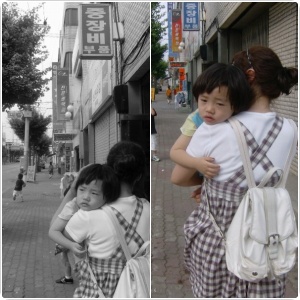
“The camera and plate are prepared, the lady must sit for her daguerreotype, …” (41)
~*~*~*~*~*~*~*~
daguerreotype, n
1. One of the earliest photographic processes, first published by Daguerre of Paris in 1839, in which the impression was taken upon a silver plate sensitized by iodine, and then developed by exposure to the vapour of mercury.
b. The apparatus used for this process (obs.). c. A portrait produced by this process.
2. fig. An exact representation or description. Obs. (since the daguerreotype itself has yielded to improved photographic processes).
“daguerreotype, n.” The Oxford English Dictionary. 2nd ed. 1989. OED Online. Oxford University Press. 4 Apr. 2000 <http://ezproxy.tcnj.edu:2147/cgi/entry/50057115?query_type=word&queryword=daguerreotype&first=1&max_to_show=10&sort_type=alpha&result_place=1&search_id=mkHB-zED4RI-3607&hilite=50057115>.
~*~*~*~*~*~*~*~
In Whitman’s Song of Myself, daguerreotype immediately caught my eye. I knew it had to be some sort of mechanism related to the camera or photography, but what interested me was how Whitman illustrated the lady with connection to the word. He says how “the lady must sit for her daguerreotype” (41). It sounded almost.. exotic, mysterious, medical, even. It sounds like she’s ready for some sort of exquisite operation ready to be performed on her. Then I remember reading in Reynold’s A Cultural Biography, how during the 1800s of Whitman’s time, there was a revolution in everything–this included forms of art and music. Though in the time of “deteriorating social conditions,” where he saw “ugly materialism and corruption” these new forms of art offered a “rationale for an organic ar based on natural rhythms and free forms” (280).
So what exactly is a daguerreotype?
First introduced by a Frenchman, Louis Jacques-Mande Daguerre 1839, this newly invented representation of reality and everyday human beings became the popular form of photography. By 1839 in New York, this type of photography was on fire.
With the birth of the daguerreotype..
“artists could no longer flatter their subjects by making them appear beautiful or intelligent ” (Reynolds 281).
(now divert your eye to the nude woman below: her natural form of beauty shines right through)

"The Well-Taken Photograph" (Reynolds 280)
~*~*~*~*~*~*~*~
Daguerreotype in the 21st century???
While surfing Youtube, I found this really interesting! It’s only 1:25 seconds. Take a look!
Please enable Javascript and Flash to view this Flash video.
David Aguirre Hoffmann uses 21st century media to recreate the feeling of a daguerreotype! : )
[a http://www.pixelsketchbook.com/?page_id=156 /a]
note: can’t get the link to work..and the woman and video refuse to be centered..
so not friendly with computers : ( darn..



